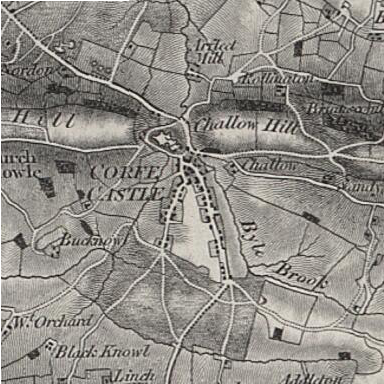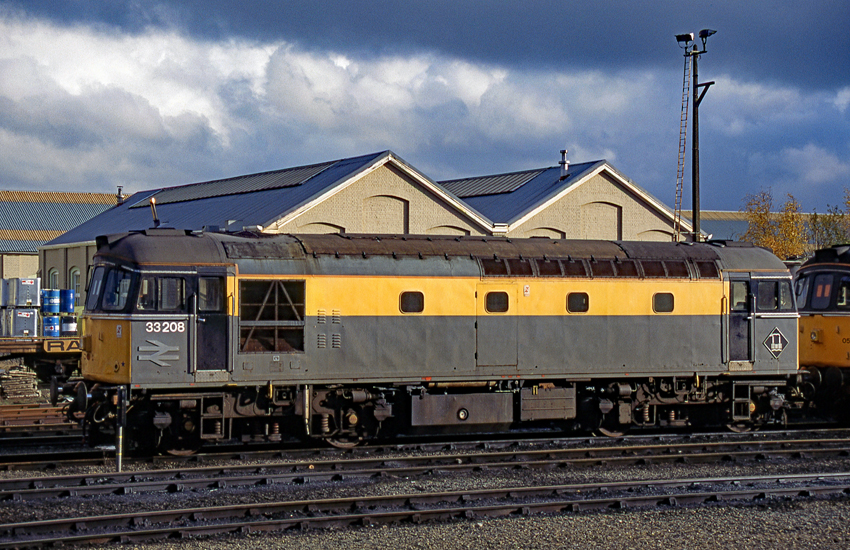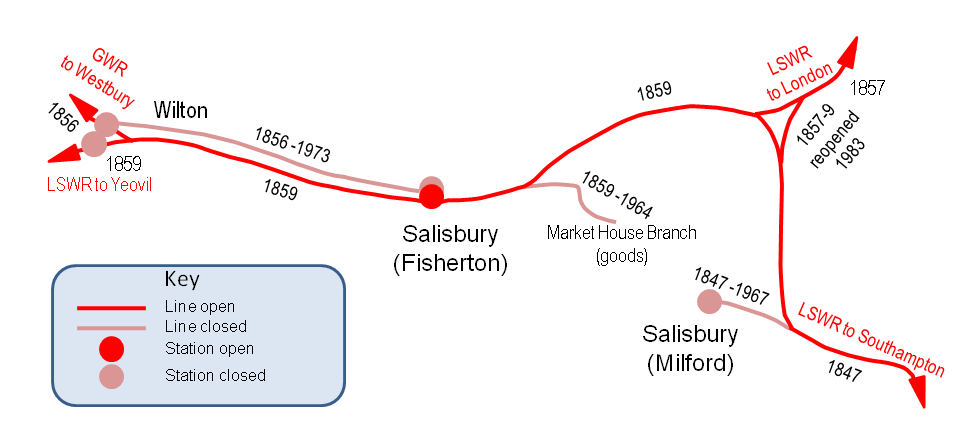|
Wareham Railway Station
Wareham railway station serves the town of Wareham in Dorset, England. It is situated about north of the town centre. It is down the line from . On tickets it is printed "Wareham Dorset" to avoid confusion with Ware railway station. History The current station opened in 1887, replacing the original station which opened in 1847 and was sited east of what is now only a pedestrian crossing but was once a busy road level crossing (the road now bridges the railway) This station had two bay platforms which served the branch line to Swanage from 1885 until 1972, when the branch closed. The branch line to Swanage is now the preserved Swanage Railway, a steam locomotive operated heritage railway that currently operates between Swanage and a Park and Ride site at Norden just north of Corfe Castle. The rail connection between the Swanage Railway and the Network Rail tracks at Worgret Junction has been restored, [...More Info...] [...Related Items...] OR: [Wikipedia] [Google] [Baidu] |
Wareham, Dorset
Wareham ( ) is a historic market town and, under the name Wareham Town, a civil parish, in the English county of Dorset. The town is situated on the River Frome eight miles (13 km) southwest of Poole. Situation and geography The town is built on a strategic dry point between the River Frome and the River Piddle at the head of the Wareham Channel of Poole Harbour. The Frome Valley runs through an area of unresistant sand, clay and gravel rocks, and much of its valley has wide flood plains and marsh land. At its estuary the river has formed the wide shallow ria of Poole Harbour. Wareham is built on a low dry island between the marshy river plains. The town is situated on the A351 Lytchett Minster-Swanage road, linking Wareham with the A35 and A31 roads and the M27 motorway. Wareham is also the eastern terminus of the A352 road to Dorchester and Sherborne, both roads now bypassing the town centre. The town has a station on the South West Main Line railway, and was fo ... [...More Info...] [...Related Items...] OR: [Wikipedia] [Google] [Baidu] |
Corfe Castle (village)
Corfe Castle is a village and civil parish in the English county of Dorset. It is the site of a ruined castle of the same name. The village and castle stand over a gap in the Purbeck Hills on the route between Wareham and Swanage. The village lies in the gap below the castle and is around south-east of Wareham, and north-northwest of Swanage. Both the main A351 road from Lytchett Minster to Swanage and the Swanage Railway thread their way through the gap and the village. The civil parish of Corfe Castle stretches across the width of the Isle of Purbeck, with coasts facing both the English Channel and Poole Harbour. It, therefore, includes sections of both the low-lying sandy heathland that lies to the north of the castle and the rugged Jurassic Coast upland to the south. History Burial mounds around the common of Corfe Castle suggest that the area was occupied from 6000 BC. The common also points to a later Celtic field system worked by the Durotriges tribe. Evid ... [...More Info...] [...Related Items...] OR: [Wikipedia] [Google] [Baidu] |
British Rail Class 442
The British Rail Class 442 ( 5-WES) ''Wessex Electrics'' were electric multiple unit passenger trains introduced in 1988 by Network SouthEast on the South West Main Line from London Waterloo to Weymouth to coincide with the electrification of the line from Bournemouth. Twenty-four five-car units were built by British Rail Engineering Limited's Derby Litchurch Lane Works. Following the privatisation of British Rail, the fleet was sold to Angel Trains and operated by South West Trains up until February 2007, when they were replaced by Class 444 and Class 450s. After a period in storage, they were leased to Southern for use on Gatwick Express services from London Victoria to Gatwick Airport and Brighton. The units were withdrawn from Gatwick Express services in 2016 and from Southern peak-hour London Bridge to Brighton and Eastbourne services in March 2017. From 2019, eighteen were leased by South Western Railway for use on London Waterloo to Portsmouth Harbour services. However ... [...More Info...] [...Related Items...] OR: [Wikipedia] [Google] [Baidu] |
Southern Region Of British Railways
The Southern Region was a region of British Railways from 1948 until 1992 when railways were re-privatised. The region ceased to be an operating unit in its own right in the 1980s. The region covered south London, southern England and the south coast, including the busy commuter belt areas of Kent, Sussex and Surrey. The region was largely based upon the former Southern Railway area. The Region The Southern Railway was still comparatively profit-making despite World War II, thanks to its extensive third rail DC electrification and the intensive service patterns this allowed for. However, large-scale investment was required in the infrastructure of all of the "Big 4" companies, including the Southern. The Transport Act 1947 provided for the nationalisation of all heavy rail systems in the UK to allow for this investment and, in theory, to improve the rights of railway workers. The railway companies were amalgamated into British Railways, part of the British Transport Comm ... [...More Info...] [...Related Items...] OR: [Wikipedia] [Google] [Baidu] |
British Rail Class 438
The British Rail British Rail unit designations, TC (Trailer Control) multiple units were unpowered fixed formations of 3 or 4 carriages with a driving position at each end of the set, converted by BR's Holgate Road carriage works from locomotive-hauled Mark 1 carriages in 1966-1967 and 1974. The units built on experience gained from the prototype British Rail Class 6Pul#6TC, 6TC unit. In time the 3 car units (3TC, numbered in the series 3xx) were reformed into four car units (4TC numbered in the series 4xx) to match the rest of the fleet and later classified as Class 442. This was later changed to Class 491, under which they spent the majority of their working lives. Shortly before withdrawal they were reclassified Class 438 and the units were renumbered to 8001-8034. Operation The units were primarily employed on services between London Waterloo railway station, London Waterloo and Weymouth railway station, Weymouth. One or two 4TC units would be propelled from London to Bourne ... [...More Info...] [...Related Items...] OR: [Wikipedia] [Google] [Baidu] |
British Rail Class 33
The British Rail Class 33, also known as the BRCW Type 3 or Crompton, is a class of Bo-Bo diesel-electric locomotives, ordered in 1957 and built for the Southern Region of British Railways between 1960 and 1962. They were produced as a more powerful Type 3 (1,550 bhp) development of the 1,160 bhp Type 2 Class 26. This was achieved, quite simply, by removing the steam heating boiler and fitting a larger 8 cylinder version of the previous 6 cylinder engine. This was possible because of the traffic requirements of the Southern Region: locomotive-hauled passenger traffic depended on seasonal tourist traffic and was heavier in the summer, when carriage heating was not needed. In the winter, their expected use was to be for freight. Thus, they became the most powerful BR Bo-Bo diesel locomotive. The perennially unreliable steam heating boiler could also be avoided. A total of 98 were built by the Birmingham Railway Carriage and Wagon Company (BRCW) and they were known as ... [...More Info...] [...Related Items...] OR: [Wikipedia] [Google] [Baidu] |
British Rail Class 205
The British Rail Class 205 ( 3H) diesel-electric multiple units were built by BR at Eastleigh from 1957 to 1962, and in service for 47 years from BR Southern Region to Connex South Central and finally to the Southern franchise. They were eventually replaced by Class 171 Turbostar units. Description This class of unit was built in four different batches for use on different lines. The Southern Region class 201 to 207 DEMUs are nicknamed 'Thumpers' owing to the noise they made while in motion. The first batch of units, numbered 1101–1118, was built in 1957 as two-car units and classified as 2H. They were built for services in Hampshire on the non-electrified routes between , and and between , and . The first units entered service in September 1957. However, owing to increasing passenger numbers, all eighteen units were strengthened to three cars in 1958 and 1969, with the addition of a centre trailer, and therefore were reclassified as 3H units. Upon the introduction of ... [...More Info...] [...Related Items...] OR: [Wikipedia] [Google] [Baidu] |
Brockenhurst Railway Station
Brockenhurst railway station serves the village of Brockenhurst in Hampshire, England. It is located on the South West Main Line from London Waterloo to Weymouth. It is also the junction of the Lymington Branch Line with the main line. It is down the line from Waterloo. It is managed and served by South Western Railway and it is also served by CrossCountry trains. The station was winner of the 2009 National Rail Award for best medium-sized station, with the judges stating they "were impressed by the standard of customer service, station presentation, initiative and innovation they observed, all of which ensure that the station provides a smooth, efficient and pleasant departure and arrival point for the travelling customer". The station was also winner of a National Cycling Award, for a system which informs passengers of where cycle spaces are on approaching trains, allowing them to speed boarding, and partnerships with local bike-hire firms. History Brockenhurst station w ... [...More Info...] [...Related Items...] OR: [Wikipedia] [Google] [Baidu] |
British Rail Class 444
The British Rail Class 444 '' Desiro'' is an electric multiple-unit passenger train built by Siemens Transportation Systems in Austria between 2002 and 2004. The Class 444 currently operate on express passenger services for South Western Railway. The class first entered service with South West Trains in 2004. Description At the start of the 21st century, as part of its franchise agreement, South West Trains was required to replace the slam-door rolling stock of Classes 411, 412, 421 and 423, which did not meet modern health and safety standards, with new trains by 2005. In April 2001 an order was placed with Siemens for 785 vehicles. This was originally to be split as 100 four-car Class 450/0 outer-suburban units, 32 five-car Class 450/2 inner-suburban units, and 45 five-car Class 444 express units. The Class 444 fleet was built at Siemens' Vienna plant. Before being shipped to Britain via the Channel Tunnel, the trains were extensively tested on the test-track at Wild ... [...More Info...] [...Related Items...] OR: [Wikipedia] [Google] [Baidu] |
Weymouth Railway Station
Weymouth railway station is the main railway station serving the town of Weymouth, Dorset, England (the other being Upwey station which is located north of the town centre). The station is the southern terminus of both the South West Main Line, down the line from , and the Heart of Wessex Line from and , from . History The Wilts, Somerset and Weymouth Railway, which was authorised in 1845, was built in stages (during which the company was absorbed in 1850 by the Great Western Railway). Two of the last sections, from to Weymouth and a connecting curve from that line to the Dorchester station of the London and South Western Railway (LSWR), were opened on 20 January 1857. The LSWR was granted running powers from Dorchester to Weymouth, where some of the platforms were dedicated for LSWR use; these powers were exercised from the opening day. The station was named ''Weymouth'', although some timetables showed it as ''Weymouth Town''. Branches to Portland and Weymouth Quay (bot ... [...More Info...] [...Related Items...] OR: [Wikipedia] [Google] [Baidu] |
Wareham - SWT 444007 Up Service
Wareham may refer to: Places * Wareham, Dorset, England * Wareham, Massachusetts, United States, a town * Wareham, Minnesota, United States, an abandoned townsite * Wareham, Newfoundland and Labrador, Canada * Wareham, Ontario, Canada * Wareham Island, Nunavut, Canada People * Andrew Wareham, British historian * Arthur Wareham, British newspaper editor * Dave Wareham, American basketball player * Dean Wareham, New York-based musician with Galaxie 500, Luna, Dean and Britta * Jack Wareham, English footballer * Louise Wareham Leonard Louise Wareham Leonard is an American writer born in New Zealand. Early life and education Leonard immigrated to New York City in 1977 with her family. She graduated with a BA from Columbia College, Columbia University in 1987. She has an MA ..., American author * Nicholas Wareham, British epidemiologist * Pete Wareham, London-based saxophonist with Acoustic Ladyland, Polar Bear, Melt Yourself Down See also * Warham (other) [...More Info...] [...Related Items...] OR: [Wikipedia] [Google] [Baidu] |
Salisbury Railway Station
Salisbury railway station serves the city of Salisbury in Wiltshire, England. It is from on the West of England line to . This is crossed by the Wessex Main Line from Bristol Temple Meads to Southampton Central. The station is operated and served by South Western Railway (SWR), and is also served by Great Western Railway (GWR). History Three railway station sites have been used in Salisbury, owned by the London and South Western Railway (LSWR) from 1847 and the Great Western Railway (GWR) from 1856, as well as two further stations at Wilton, west. London and South Western Railway The LSWR opened their Milford station on the east side of the city on 1 March 1847, with the opening of their branch line from Eastleigh, near Southampton, to passenger traffic. This was the city's only railway until 30 June 1856, when the GWR opened the Salisbury branch from Westbury. On 1 May 1857, the LSWR opened the extended main line from London and Andover, at first to the Milfo ... [...More Info...] [...Related Items...] OR: [Wikipedia] [Google] [Baidu] |









_Station%2C_with_an_express_to_Waterloo_geograph-2635809-by-Ben-Brooksbank.jpg)
